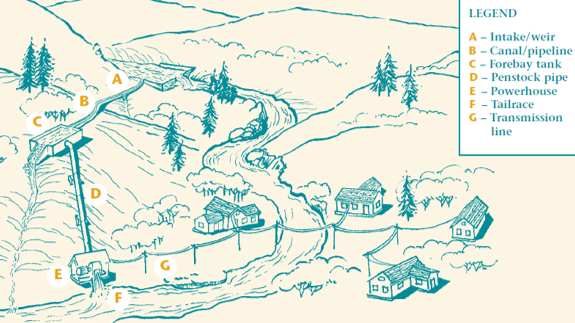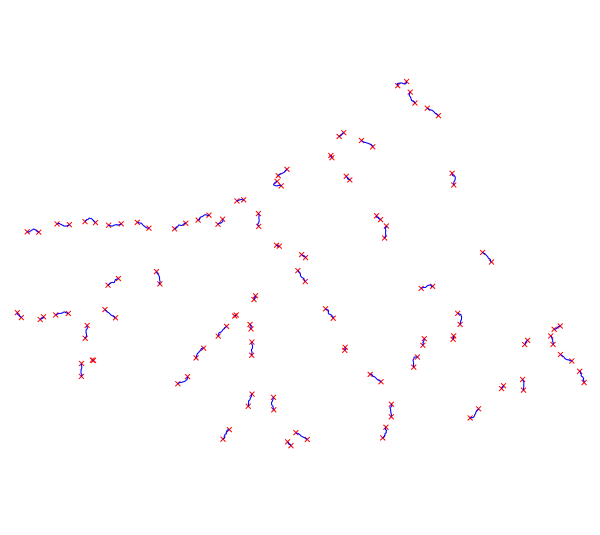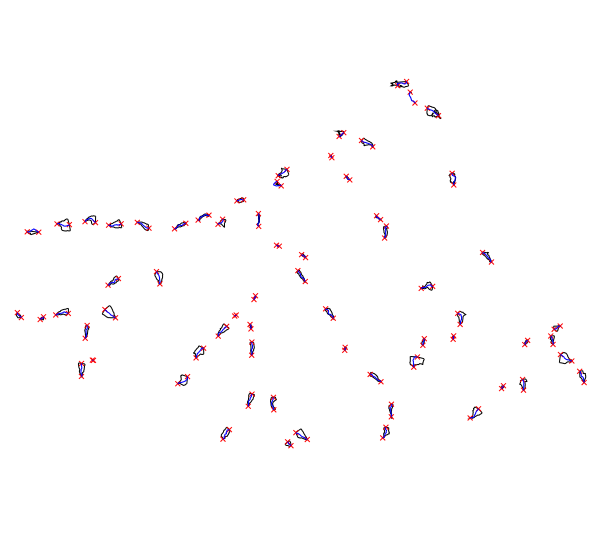
NAME
r.green.hydro.structure - Compute channels and penstocksKEYWORDS
SYNOPSIS
r.green.hydro.structure
r.green.hydro.structure --helpr.green.hydro.structure [-d] elevation=name plant=name [plant_layer=string] [plant_column_plant_id=string] [plant_column_point_id=string] [plant_column_stream_id=string] [plant_column_elevup=string] [plant_column_elevdown=string] [plant_column_discharge=string] [plant_column_power=string] [ndigits=integer] [resolution=float] [contour=name] [output_point=name] output_struct=name [--overwrite] [--help] [--verbose] [--quiet] [--ui]
Flags:
- -d
- Debug with intermediate maps
- --overwrite
- Allow output files to overwrite existing files
- --help
- Print usage summary
- --verbose
- Verbose module output
- --quiet
- Quiet module output
- --ui
- Force launching GUI dialog
Parameters:
- elevation=name [required]
- Name of input elevation raster map
- plant=name [required]
- Name of input vector map with segments of potential plants
- Or data source for direct OGR access
- plant_layer=string
- Name of the vector map layer of plants
- Vector features can have category values in different layers. This number determines which layer to use. When used with direct OGR access this is the layer name.
- Default: 1
- plant_column_plant_id=string
- Column name with the plant id
- Default: plant_id
- plant_column_point_id=string
- Column name with the point id
- Default: cat
- plant_column_stream_id=string
- Column name with the stream id
- Default: stream_id
- plant_column_elevup=string
- Column name with the elevation value at the intake (upstream) [m]
- Default: elev_up
- plant_column_elevdown=string
- Column name with the elevation value at the restitution (downstream) [m]
- Default: elev_down
- plant_column_discharge=string
- Column name with the discharge values [m3/s]
- Default: discharge
- plant_column_power=string
- Column name with the potential power [kW]
- Default: pot_power
- ndigits=integer
- Number of digits to use for the elevation in the contour line vector map
- Default: 0
- resolution=float
- Resolution use for the contour line vector map, if 0.25 approximate 703.31 tp 703.25
- contour=name
- Name of the contour line vector map
- output_point=name
- Name of output vector map with potential intakes and restitution
- Name for output vector map
- output_struct=name [required]
- Name of output vector map with the structure of the plants
- Name for output vector map
DESCRIPTION
r.green.hydro.structure computes the derivation channel and the penstock for each potential plant and for both sides of the river.NOTES
The input maps are the elevation raster map and the one with the segments of potential plants (vector map which can be computed by r.green.hydro.optimal or r.green.hydro.recommended).In the section "Input column", the column names in the table of the map with potential plants have to be reported in order to read correctly the corresponding values.
The module returns a vector map with the structure for each plant on both sides of the river. The derivation channel and the penstock are distinguished and reported in the table.
In option, the module can also compute the vector map with the intake and restitution of each potential plant.
As the current potential concerns especially small hydropower (inferior to 20 MW), the structure suggested is the one for small hydropower detailed in the picture below. It is composed of an intake (A) which diverts water from the river. This water is conveyed into a derivation channel (B) with a very low slope and arrives in a forebay tank (C) which regulates the fluctuation of discharge. Finally, the penstock (D) conveys the water with the highest possible head to the turbine-alternator group (E) which produces electricity. The water is then released in the river (restitution F). We use the following vocabulary: the structure of the plant corresponds to the part with the derivation channel, the forebay tank and the penstock, whereas the segment of the plant corresponds to the part of the river (water not diverted) between the intake (A) and the restitution (F).

Structure of the plants considered in the module
The power is maximized for the highest head in the penstock so the derivation channel is computed along the same quote (the low slope is neglected here) until the point which maximizes the head along the penstock. The structure is computed for both sides of the river in order to determine which one produces the most power.
EXAMPLE
This example is based on the case-study of Gesso and Vermenagna valleys in the Natural Park of the Maritime Alps, Piedmont, Italy.Here is the input vector map potentialplants with the segments of potential plants (in blue). The vector map with the intakes and restitution of potential plants is also visibile in red on this picture.

Input vector map potentialplants
The following command computes the derivation channel and the penstock for each potential plant and for each side of the river :
r.green.hydro.structure elevation=elevation plant=potentialplants output_struct=structplants
The result is shown in black in the following picture which gathers the input and output maps.

Output vector map structplants in black
SEE ALSO
r.green.hydro.discharger.green.hydro.delplants
r.green.hydro.theoretical
r.green.hydro.optimal
r.green.hydro.recommended
r.green.hydro.technical
r.green.hydro.financial
REFERENCE
Picture of the plant structure taken from Micro-hydropower Systems - A Buyer's Guide, Natural Resources Canada, 2004AUTHORS
Pietro Zambelli (Eurac Research, Bolzano, Italy), Manual written by Julie Gros.SOURCE CODE
Available at: r.green.hydro.structure source code (history)
Latest change: Monday Jan 30 19:52:26 2023 in commit: cac8d9d848299297977d1315b7e90cc3f7698730
Main index | Raster index | Topics index | Keywords index | Graphical index | Full index
© 2003-2023 GRASS Development Team, GRASS GIS 8.2.2dev Reference Manual